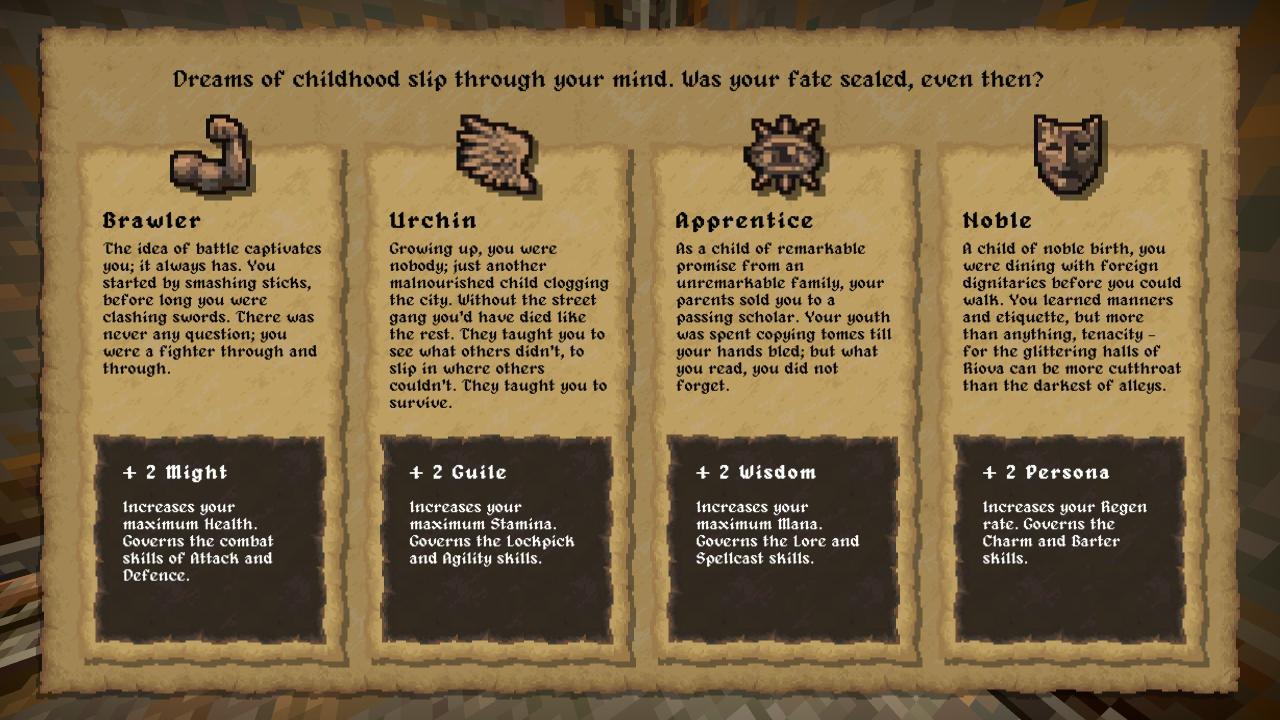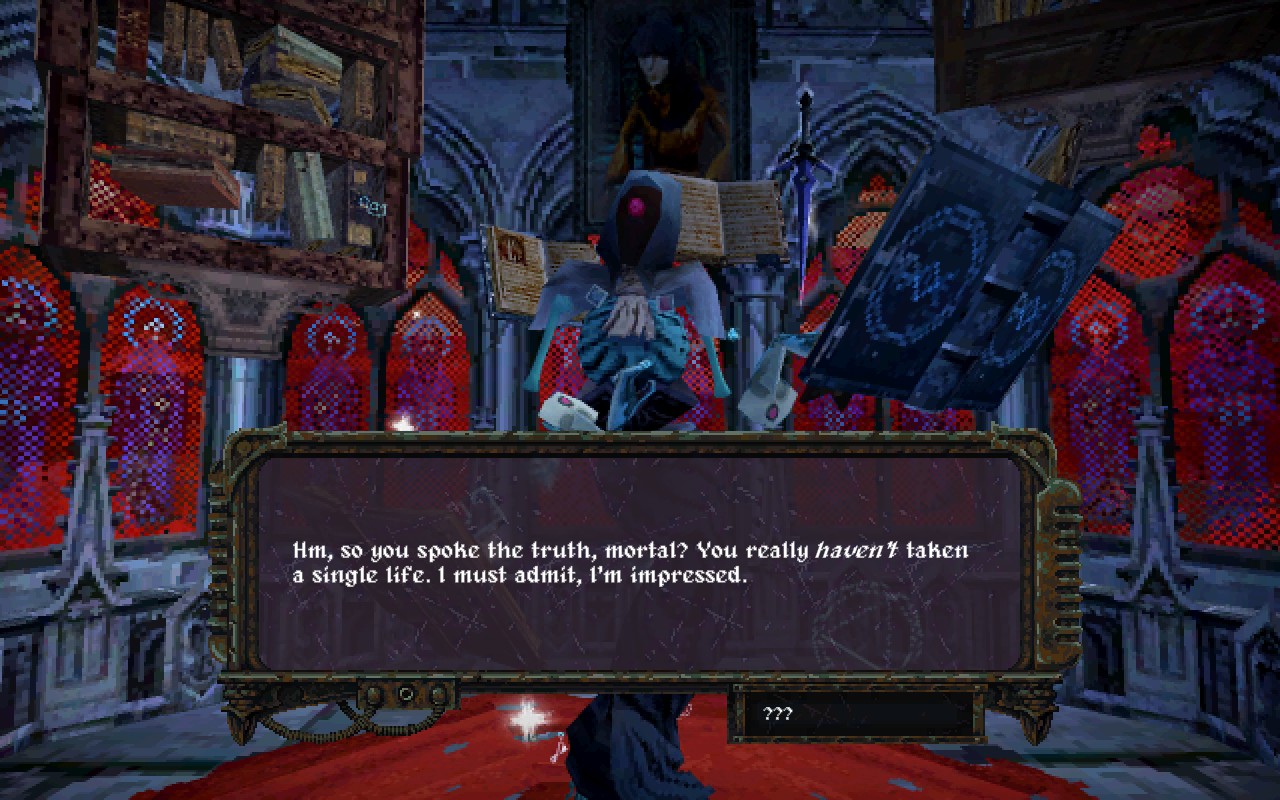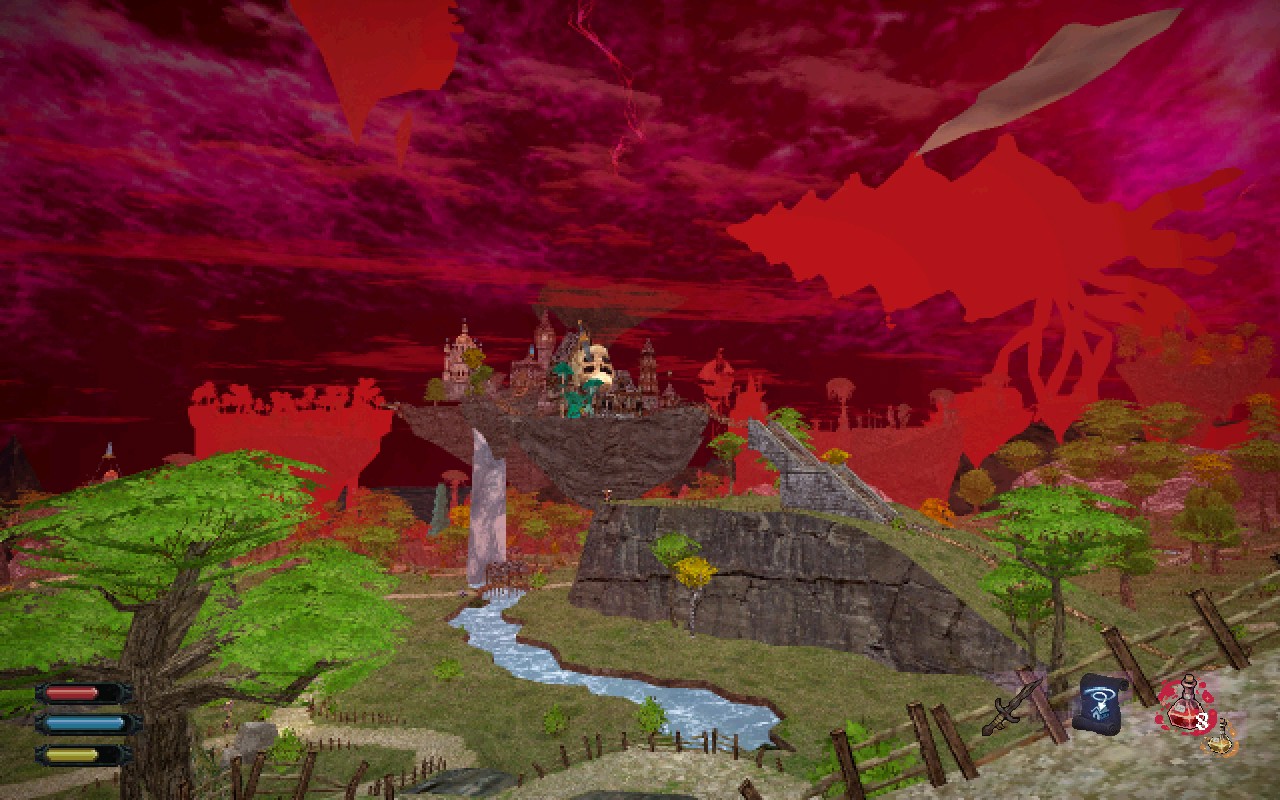Why I enjoyed Dread Delusion
I agonized about which game I’d like to write about first, and decided that Dread Delusion is the perfect candidate: I loved it, it tugged on my nostalgia strings, and it’s still fresh in my head. Let me tell you about why I enjoyed Dread Delusion.
Dread Delusion caught my eye because many reviewers compared it to The Elder Scrolls III: Morrowind, and I’ve recently began to enjoy games with throwback PS1-era graphics. Morrowind being my all-time favorite game, I couldn’t pass checking it out. The vibrant colors spoke to me too.
Well, is it like Morrowind? It has giant mushrooms and weird eldritch lore, rudimentary skill system and level ups, and some basic dialogue with NPCs. But I think the main reason behind the comparison is how the game made me feel when exploring the world. Dread Delusion’s world is magical, mysterious, and full of surprises, and that’s what kept me hooked.
 High Confessor of the inquisition welcomes you into the world of Dread Delusion. The blood is gushing from the iron maiden, and a mission briefing is presented through diegetic interfaces: you can see drawings and maps behind her.
High Confessor of the inquisition welcomes you into the world of Dread Delusion. The blood is gushing from the iron maiden, and a mission briefing is presented through diegetic interfaces: you can see drawings and maps behind her.
Without spoiling too much, the world of Dread Delusion is a world in decline: the lands are fractured after an event referred to as the World Rend. Islands are held up in the air by unexplained magic. Odd phenomena have been permeating the lands for decades. It’s a land of dead lovecraftian gods, forgotten technology, unexplained magic, and decayed former glory. Dread Delusion shines in its environmental storytelling: it invoked a sense of childlike wonder and desire to explore, learn about the mysterious land, and discover secrets.
I’m a huge fan of navigation as part of the gameplay: I feel like the “magic maps” - that is automatically updated maps with a built-in always on GPS - tend to destroy my sense of immersion, and take away a large part of gameplay I enjoy - learning about the world, its landmarks, and paths within. Dread Delusion has an in-game map, but you have to populate it yourself by visiting landmarks and marking them on your map. Once parts of the map are filled out, your location on the map is shown, but you still have to use compass and nearby landmarks to identify your location and heading. And most importantly, there is no minimap.
The game rewards you for getting familiar with its world: there are many shortcuts and secrets - some more obvious than others. Secrets range from easy to hard to find, but I found all of them to have certain “tells” - you’re not required to blindly run into every wall in the hopes of finding an illusory one. Over time you’ll learn certain signs that a hidden path might be nearby: a whispered NPC hint, a cryptic note, or an environmental cue.
 Character creation is done through selecting your backstory - it impacts your skills and sometimes meaningfully comes up in dialogue.
Character creation is done through selecting your backstory - it impacts your skills and sometimes meaningfully comes up in dialogue.
You have 4 attributes (Might, Guile, Wisdom, Persona) which govern 8 corresponding attributes (Attack, Defense, Lockpick, Agility, Lore, Spellcraft, Charm, Barter). Unfortunately some attributes are certainly more important than others. Guile is critical, as it controls movement speed and jump height (through Agility), while Might is not that important (combat isn’t hard, even in game’s hard mode). There’s an abundance of skill checks, but also plenty of equipment which boosts skills.
Level ups happen through completing quests but also exploration (woo-hoo) - as you find glimpses of delusion (the level-up currency) scattered throughout the world).
 Pacifist runs are possible, and are even acknowledged throughout the game.
Pacifist runs are possible, and are even acknowledged throughout the game.
The storyline and characters are top-notch. You come to meet and get to know interesting and complex (for the size of the game) characters. You get to make meaningful choices which affect characters, the world, and, of course, the endgame slideshow. There are many side quests, all of which somehow tie into (or directly impact) either the main story, or shed more light on the world and its characters. There’s very little to no filler when it comes to quest design.
While the game avoids bloat with quests, it starts to drag on towards the end by introducing unnecessary mechanics. You get your own airship towards the end of the game, which opens up the map, but ultimately undermines all the effort you put into learning the interconnected world geography. This disincentivizes prior exploration: by now you’ll likely be rather familiar with the game world and able to traverse seemingly disconnected parts of it quickly through series of clever shortcuts - and the airship nullifies the value of the accumulated knowledge. It’s clunky to control too.
There’s tacked on homebuilding mechanic, which I believe was added in a patch, and I believe it takes away from the game. It comes with a somewhat basic quest which is, in an uncharacteristic fashion, is disconnected from the rest of the narrative and doesn’t hit particularly hard. Player home offers a much needed money sink for late game, but results in checkbox style content - something the game avoids until that point.
 Hallow Town is one of the number of settlements you can visit in Dread Delusion. The skies are always red from the light of the neutron stars. You can even see a giant mollusk up in the sky.
Hallow Town is one of the number of settlements you can visit in Dread Delusion. The skies are always red from the light of the neutron stars. You can even see a giant mollusk up in the sky.
Despite some bloat towards the late game, Dread Delusion is fantastic time for around 20 hours it takes to finish and is well worth your time and money. I eagerly anticipate the future projects of Lovely Hellplace. If you’re intrigued, you can pick up Dread Delusion on Humble Bundle (non-affiliate link) for $20 at the time of writing.
Comments
Respond directly on Bluesky (threads shown below) or Medium (view comments there).